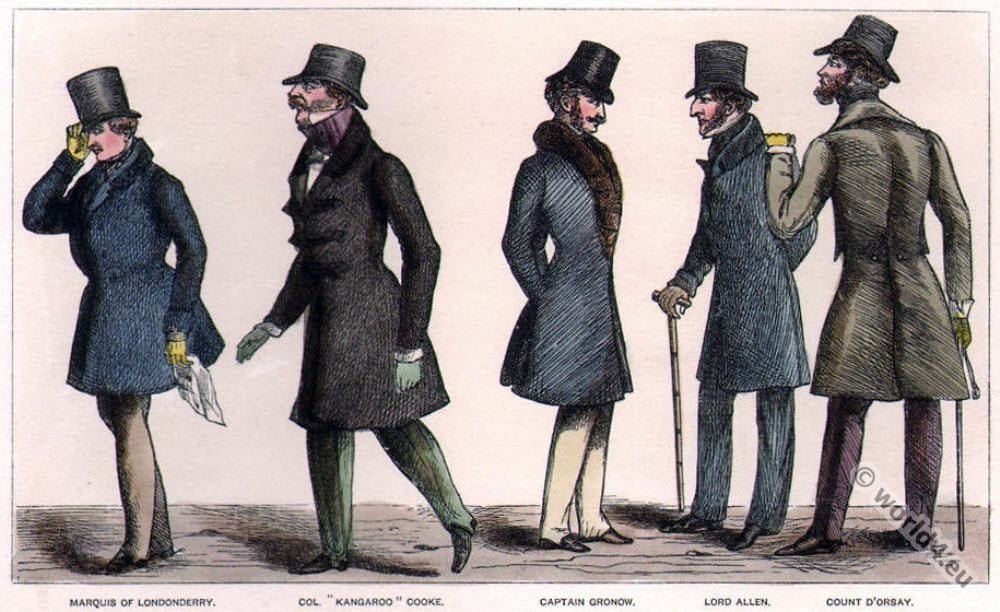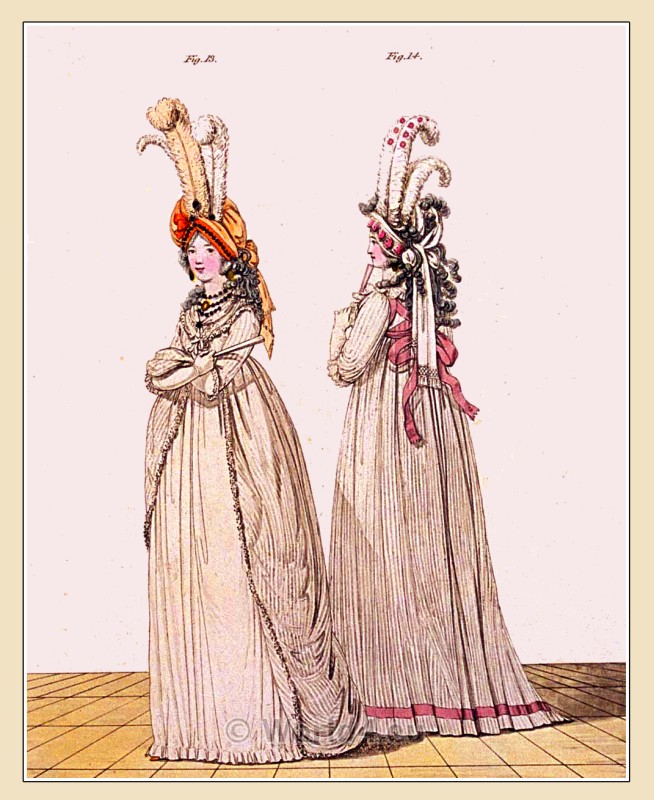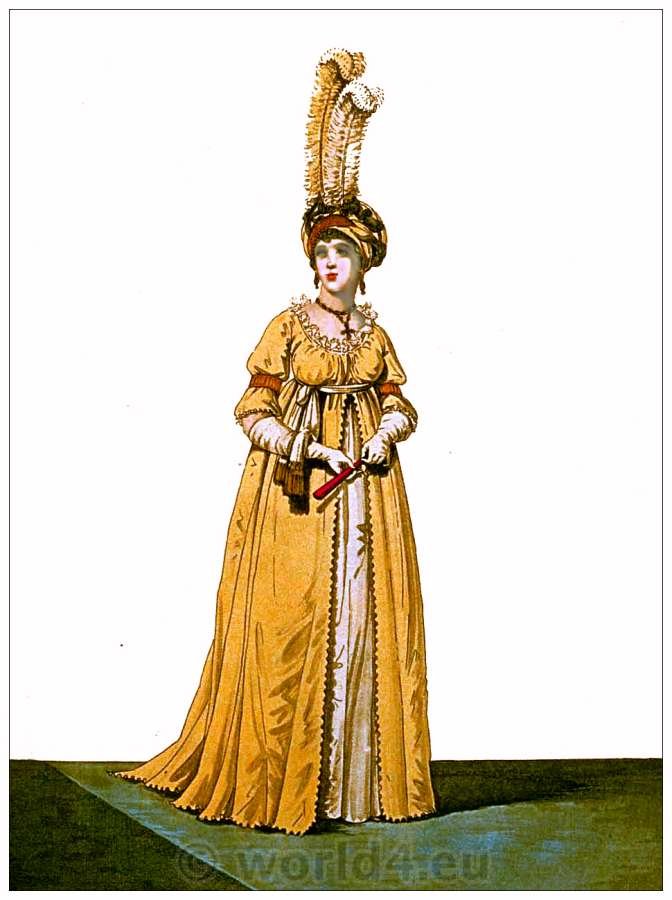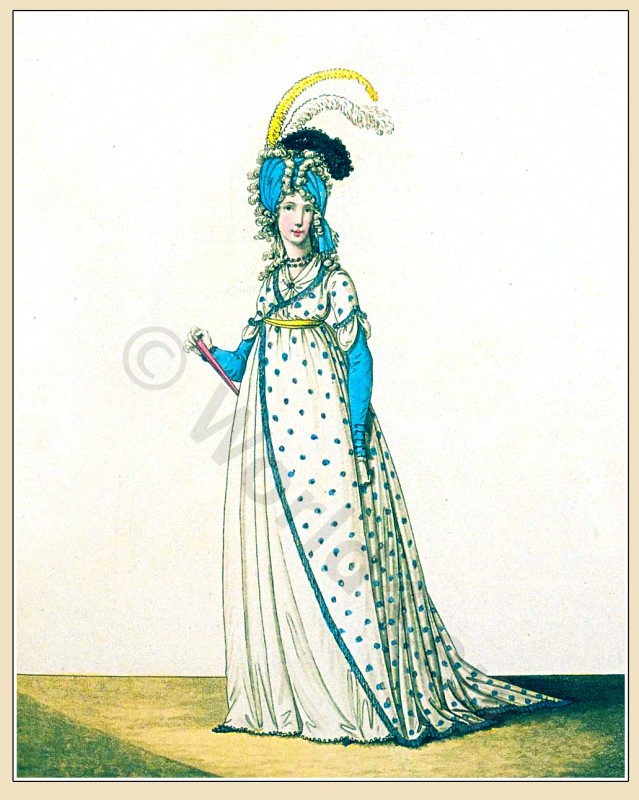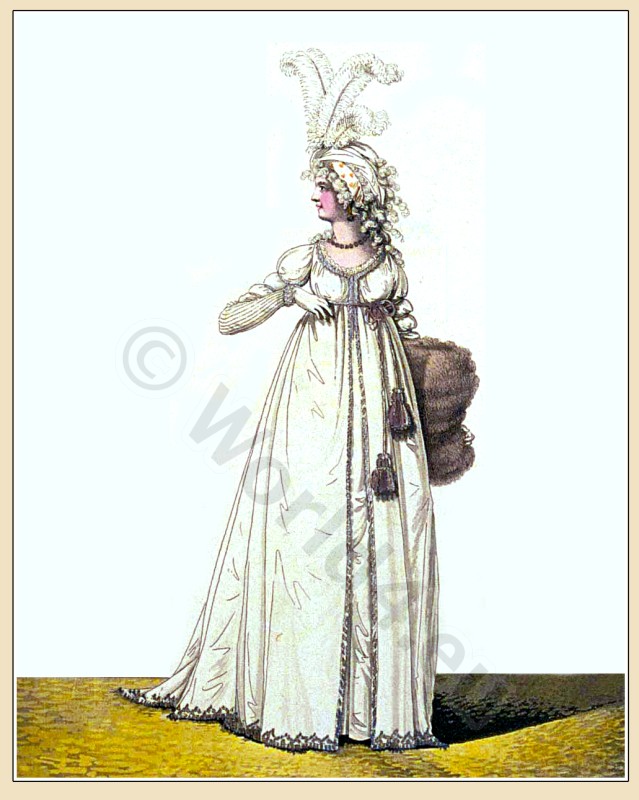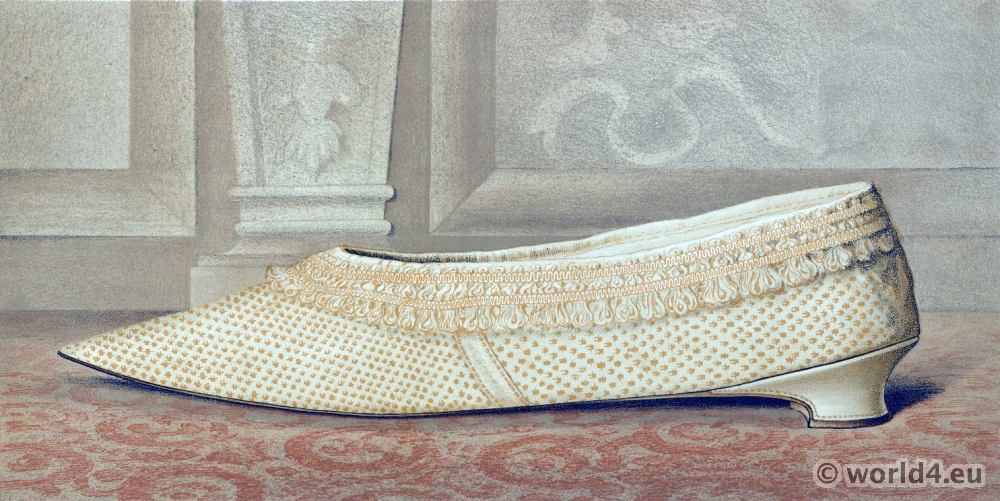Regency dandies. England 1812. Habitués of White’s.
From left: Marquis of Londonderry, Colonel “Kangaroo” Cooke, Captain Gronow, Lord Allen, Count D’Orsay. Artist Joseph Grego.
Source: The Reminiscences and Recollections of Captain Gronow, being anecdotes of the camp, court, clubs and society, 1810-1860. By Captain Rees Howell Gronow (1794–1865). Published: London, John C. Nimmo, 1889. Artist Joseph Grego (1843-1908).

